Your next gaming laptop is going on a diet
How Nvidia's Max-Q is making gaming notebooks thinner, lighter, and quieter.
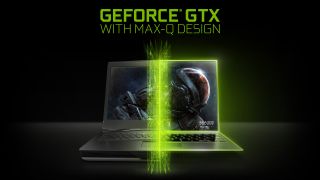
What do you do as a company when your last major product release is still selling well, and you're at least six months away from launching the next generation part? Answer: you pivot. Nvidia has built a successful business around its graphics portfolio, and its existing Pascal GPUs are still the best game in town. The GTX 1080 Ti is yesterday's news, and Volta is coming, but Computex is here and now. If you've followed Nvidia's product launches long enough, you know what usually comes next: something for the mobile world, in this case for gaming notebooks.
2016 saw the launch of the GTX 1080/1070/1060 in the spring and early summer, followed by a fall launch of the mobile variants of the same GPUs. Those mobile solutions also happen to be the closest Nvidia has ever come to matching desktop graphics card performance on a gaming notebook. Most of this is accomplished via the improved efficiency of the Pascal architecture. But with the 10-series notebooks already available, where do we go next?
It might be fun to imagine cramming a GTX 1080 Ti into a notebook chassis, but it's unlikely to happen due to the 250W TDP. We never saw GTX 980 Ti or Titan X in notebooks for the same reason. Nvidia could reduce the clockspeeds and lower voltages until the GPU could reasonably work in a mobile chassis, but it might not end up much faster than the existing mobile GTX 1080. At the same time, OEM partners often want new products to show for the fall back to school season.
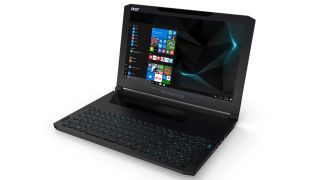
Nvidia's latest announcement in the computer graphics world is Max-Q, a philosophy designed to get high performance graphics cards into the thinnest notebooks possible. But thin gaming notebooks already exist, right? Max-Q is Nvidia's wider, holistic view of thin gaming notebooks, including tweaks not just to the hardware but also to the drivers and other elements. The core aspects of Max-Q may already exist separately, but Nvidia is working with the notebook vendors to put combine all the necessary elements, all in pursuit of making make thin and light gaming notebooks that won't scorch your lap a reality.
Why does any of this even matter? Aesthetics is certainly one element of the equation, as most gaming notebooks tend to be a bit blocky and ugly. But the bigger problem is simply the size of gaming notebooks. I love the power I can get from MSI's GT73VR as an example—it's nearly as fast as my desktop i7-7700K running a GTX 1080, and I can take it with me if needed. But I don't actually want to take it with me when I travel, because the thing is a behemoth. It weighs 4.14kg/9.11 lbs., and that's not including the 1kg/2.2 lbs. power brick. Put all of that into a backpack and it's just not comfortable to lug around. Battery life is also pretty bad, adding insult to injury. There's an alternative in thin and light gaming notebooks (like the Razer Blade or MSI GS63VR), but noise and/or skin temperature while gaming are now a concern. Max-Q hopes to cure all ailments on the road to mobile nerdvana.
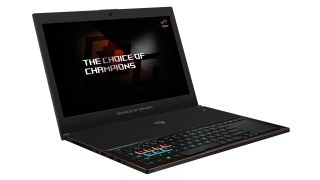
The road to Max-Q
Any silicon microprocessor has an efficiency curve showing performance relative to power/voltage. Overclockers use this knowledge to improve clockspeeds on their CPUs and GPUs while sacrificing power efficiency. A specific chip design will have variance due to manufacturing, so some Ryzen 7 chips as an example might use more power and need a bit more voltage to run reliably at a given clockspeed. Most companies will 'bin' their chips into various categories based on how each performs, so for example the best GP104 chips might be sold as mobile GTX 1080, then one step down is desktop GTX 1080, then mobile GTX 1070, and finally desktop GTX 1070. It's the same GP104 chip in all cases, but some parts are turned off in the 1070 variant, and clockspeeds and/or voltages might be less desirable as well.
With overclocking, you can often improve the performance of a part by increasing the voltage, provided you can deal with the additional heat that creates. Core i7-7700K at stock runs at up to 4.5GHz, but increase the voltage to 1.35V and you can usually run it at 5.0GHz. There's a limit to how far you can go, however, and at some point a small increase in clockspeed will require a much larger increase in voltage. This usually happens near the limit of what a chip can do, though exotic cooling like liquid nitrogen might allow for additional voltage.
The biggest gaming news, reviews and hardware deals
Keep up to date with the most important stories and the best deals, as picked by the PC Gamer team.
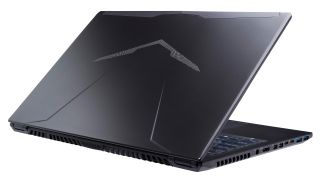
The counter to this is also true: drop the clockspeed and voltage and you can use less power and generate less heat. This is what we usually see with mobile CPUs and GPUs, where the TDP and clockspeed are about half of the desktop counterpart. It's also how AMD was able to take the same 275W Fiji GPU that it uses in the R9 Fury X and turn it into a 175W R9 Nano. But as with increasing voltages, at some point, the chip will require substantially lower clockspeeds in order to reduce voltage any further, giving a lower limit. Somewhere between the maximum and minimum extremes lies the point of optimal efficiency, which is what Max-Q targets.
It's not just the GPU that affects power use, however. The voltage regulator modules (VRMs) are also a large source of heat and power use, typically converting a 12V into something more appropriate like 1.0~1.1V. There's a loss in efficiency (as heat) when converting voltages, and the best VRMs are as efficient as possible. It's possible to use less efficient VRMs and simply provide additional cooling, which we see on many motherboards and graphics cards, but that doesn't work so well in the notebook world. The laptop alternative is to buy higher quality, more efficient VRMs so that power isn't wasted.
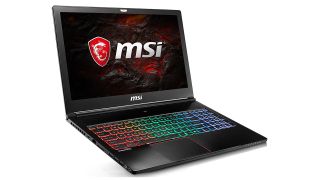
The final hardware ingredient for Max-Q is improved cooling solutions, including more advanced heatsinks/heatpipes, and more efficient fans. Combine all these ideas and we're most of the way to Nvidia's new Max-Q initiative. Mobile GPUs are already binned for their power characteristics, but lowering the clockspeeds and constraining thermals can yield even lower power requirements. Now use the best VRMs, coupled with the best fans and heatsink technology, and tune everything for efficiency and low noise. Finally, add some driver optimizations to optionally trade quality and performance for lower GPU utilization and we're done.
The key takeaway from Nvidia's Max-Q announcement is that these notebooks are going after efficiency rather than just raw performance. The Max-Q notebooks will target a maximum noise level of 40 dB, which is quieter than what I've seen on most gaming laptops, particularly thin and light models (eg, the aforementioned Razer Blade and MSI GS63VR). Temperatures should also be lower, though Nvidia doesn't actually list any thermal requirement unfortunately. Getting from the current mobile 10-series parts to the new Max-Q 10-series parts will also involve a reduction in performance, based on the particular notebook design. The following table summarizes the 'standard' 10-series notebook parts compared to the Max-Q variants.

As for when the new Max-Q notebooks will ship, June 27 appears to be the earliest shipping date, though individual laptops may show up later—Acer states August as the availability date for the Predator Triton, for example. Pricing varies by components as usual, and I expect these new stylishly thin and light gaming notebooks will carry a price premium. Again, Acer lists a starting price of $2,999, though that's obviously a top-tier product with its GTX 1080 and touchscreen Gorilla Glass.
Personally, I'm excited to see these new designs, as I've long since outgrown carrying around a large gaming notebook. I use a Dell XPS 15 for travel, which weighs about as much as the new Max-Q notebooks…except my system is an older model that struggles to game thanks to its aging GT 750M. While there will always be users that want the most performance possible in a gaming notebook, choice is a great thing, and the Max-Q systems should please users who want to game without breaking their backs.
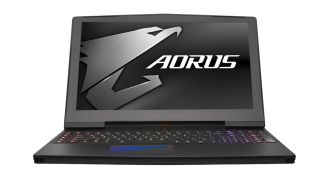
Jarred's love of computers dates back to the dark ages when his dad brought home a DOS 2.3 PC and he left his C-64 behind. He eventually built his first custom PC in 1990 with a 286 12MHz, only to discover it was already woefully outdated when Wing Commander was released a few months later. He holds a BS in Computer Science from Brigham Young University and has been working as a tech journalist since 2004, writing for AnandTech, Maximum PC, and PC Gamer. From the first S3 Virge '3D decelerators' to today's GPUs, Jarred keeps up with all the latest graphics trends and is the one to ask about game performance.
Most Popular


